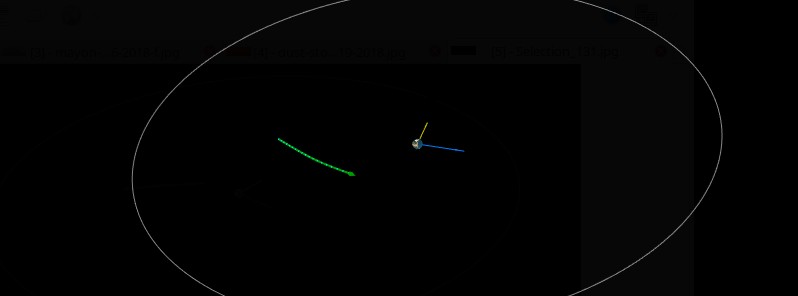Asteroid 2018 BR1 flew past Earth at 0.33 LD on January 16, 5th in 4 days

A small asteroid designated 2018 BR1, first observed on January 17 flew past Earth at a distance of 0.33 LD / 0.00088 (~131 646 km / 81 801 miles) on January 16, 2018. This is now the 5th known asteroid to flyby Earth within 1 lunar distance in 4 days and the 6th since January 2, 2018.
2018 BR1 has an estimated diameter of 3.3 and 7.5 m (10.82 – 24.6 feet) and belongs to the Apollo group of asteroids. It flew past Earth at 13:22 UTC on January 16 at a speed (relative to the Earth) of 8.86 km/s.
[ Ephemeris | Orbit Diagram | Orbital Elements | Physical Parameters | Close-Approach Data ]
As already said, this is the 5th asteroid to flyby Earth within 1 lunar distance in just 4 days, suggesting they sometimes come in swarms.
You can think about this noticeable pattern in many different ways, depending on how far you want to go. We welcome your ideas and comments.
<1 lunar distance asteroid flybys since the start of the year:
2018 BX – January 19 @ 23:00 UTC. Distance: 0.73 LD | 0.00188 AU. Size: 4.3 – 9.5 m
2018 BC – January 19 @ 20:23 UTC. Distance: 0.73 LD | 0.00189 AU. Size: 3.5 – 7.9 m
2018 BD – January 18 @ 15:43 UTC. Distance: 0.10 LD | 0.00026 AU. Size: 2.5 – 5.5 m. Note: closest
2018 BR1 – January 16 @ 13:22 UTC. Distance: 0.34 LD | 0.00088 AU. Size: 3.3 – 7.5 m
2018 BW – January 15 @ 15:13 UTC. Distance: 0.43 LD | 0.00112 AU. Size: 6.5 – 14 m
2018 AH – January 2 @ 04:25 UTC. Distance: 0.77 LD | 0.00199 AU. Size: 85 – 190 m. Note: Largest
Reference:
Asteroid 2018 BR1 at Minor Planet Center; at CNEOS
Featured image: Featured image: The green line indicates the object's apparent motion relative to the Earth, and the bright green marks are the object's location at approximately one-hour intervals. The Moon's orbit is grey. The blue arrow points in the direction of Earth's motion and the yellow arrow points toward the Sun. Credit: Minor Planet Center.

Could this swarm be related to the unusual number of spectacular fireballs seen recently?
Possibly
It looks like the earth has entered into some debris or asteroid field. We should not ignore that asteroid impacts may have had an important role in the evolution of the life on earth, directly and indirectly.
We all remember the extinction of dinosaurs because of the impact on the Yucatan peninsula, but I won’t wonder that other impacts (even closer to the holocene) may have played a critical role in the past of this planet.